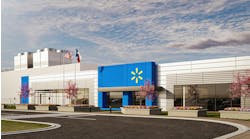Ten years ago, one of the most extensive food recalls in the U.S. forced more than 360 companies to recall more than 3,900 peanut products across 46 states. One company, the Peanut Corp. of America (PCA) was the cause in what eventually became one of the most massive and lethal foodborne contamination cases in the U.S., killing nine and sickening thousands.
The Food Safety Modernization Act (FSMA), signed into law by President Obama in 2011, was enacted in large part in response to the PCA recall. FSMA shifted the focus to preventing outbreaks rather than just reacting to them. The law requires that companies implement best practices to prevent hazards that may be introduced as part of the manufacturing or packaging process.
Despite the advent of FSMA, food safety in the U.S. continues to be an issue. The recent romaine lettuce recalls have sickened hundreds. There have been bats found in bags of salad and golf ball remains identified in frozen hash browns. The Centers for Disease Control (CDC) estimates that more than 48 million Americans get sick each year, 128,000 are hospitalized and 3,000 die due to foodborne illnesses.
A five-year review of the quarterly Stericycle Expert Solutions Recall Index revealed that the food and beverage industry experienced the most dramatic spike in recalled units. Food products recalled by the FDA rose 92.7 percent 2012-2017, and recalled pounds of food regulated by USDA, which largely oversees meat production, jumped 83.4 percent in the same period.
Technological improvements in food testing combined with factory farming and growing automation in food production were major drivers of the increases. Today’s improved methods for identifying tainted food have for the most part helped diminish the quantity of tainted food being distributed from just five years ago.
Data from both the USDA and the FDA show food product recalls increased significantly from 2004 through 2013, with recalls due to undeclared allergens nearly doubling in the decade. Salmonella, listeria and other contaminants have become increasingly prevalent in recent years.
But it’s not all doom and gloom for the industry. There have been some positive signs as well. Food safety reforms have pushed the industry toward a wider adoption of digital technologies to monitor and protect the food supply. Traceability in the food supply chain is also improving. Some food producers are looking to new technologies like blockchain to improve the integrity and monitoring of food safety from factories to store shelves.
Fast and more reliable food testing methods that detect the presence of toxins, allergens and foreign materials are more readily available. Companies are investing more in training programs for food safety best practices. And perhaps most importantly, corporate cultures have changed in the wake of the PCA outbreak.
PCA executives were aware of the tainted peanuts and chose to distribute the food regardless, eventually causing the company to go out of business. Today, senior management at more and more food producers are placing a stronger emphasis on developing a food safety culture around manufacturing best practices and standards.
Regardless of what solutions food producers adopt, the threat of contamination or other food safety issues will always be present no matter how diligent the industry may be. That’s why it’s critical to develop a recall plan and practice it as outlined below:
- Ensure you have a plan in place to notify retailers immediately. This will help keep additional products from entering consumers’ homes in the first place. In addition, many retailers have membership, rewards and loyalty programs that allow them to contact only affected consumers directly. This can greatly increase the number of consumers who check their freezers.
- Many food companies have to update the recall multiple times because they didn’t realize until after the first announcement just how many lot codes were affected. This is common with products such as ground beef, which may include meat from many different cattle, or any product where traceability is challenging. Conducting mock recalls can help identify and correct issues that could make it difficult to understand the scope.
- Perform effectiveness checks early and often. Waiting too long can make it difficult to right the ship if necessary. Regulators may have certain minimum requirements, but some companies choose to go above and beyond those mandates to increase the likelihood that consumers will respond to the recall.
The right recall strategies can save time, money and even lives, especially when the recall involves a daily staple for consumers such as food.
About the Author
Chris Harvey is director of recall solutions for Stericycle Expert Solutions (www.stericycleexpertsolutions.com), which provides recall, retrieval, return and audit processes.


